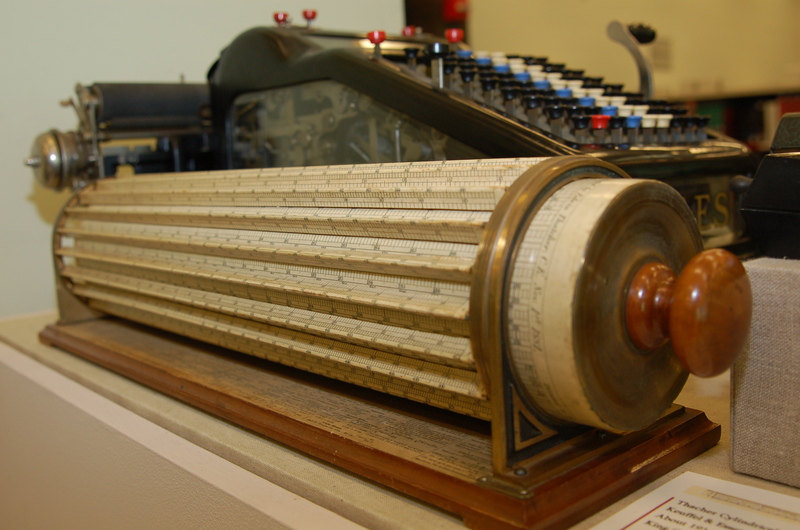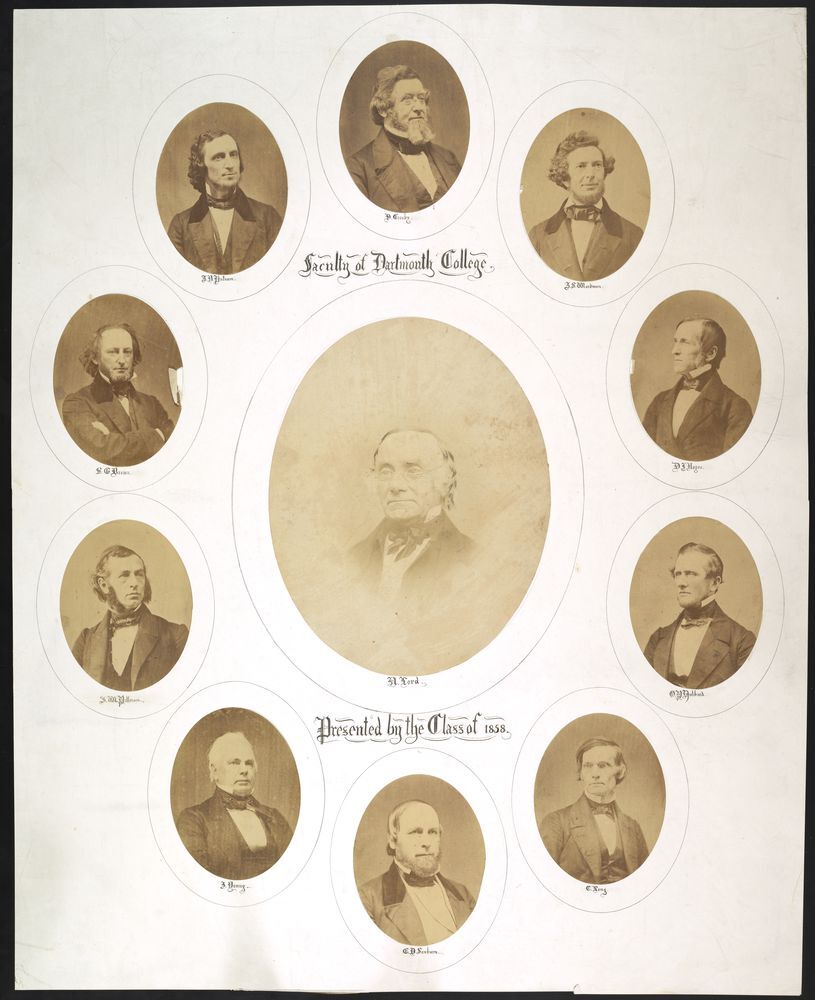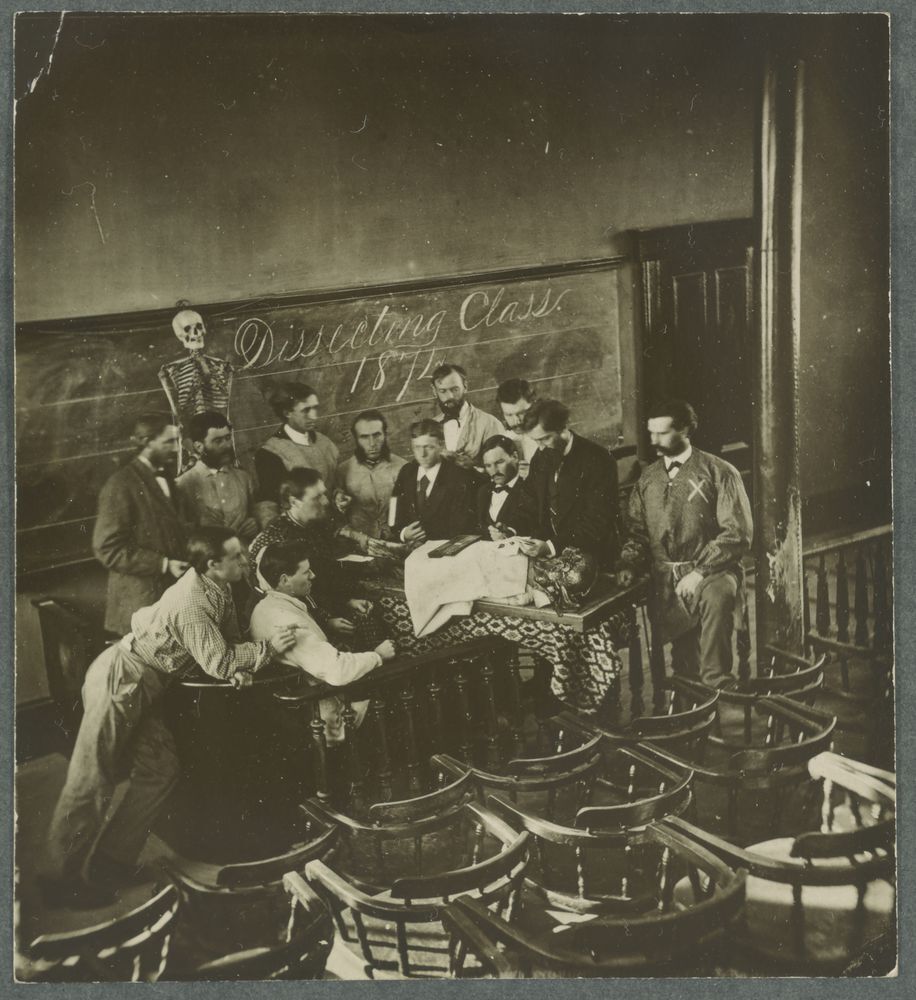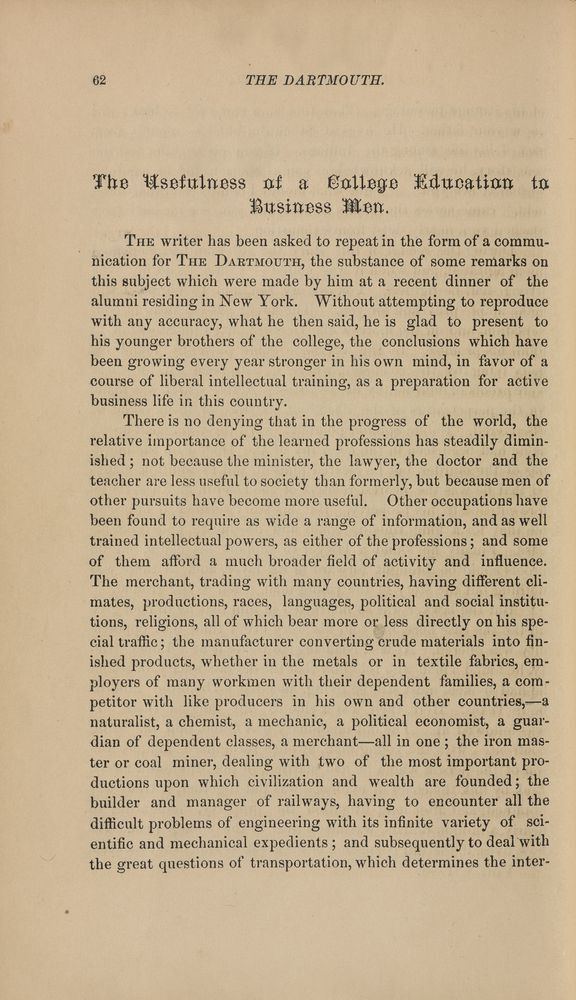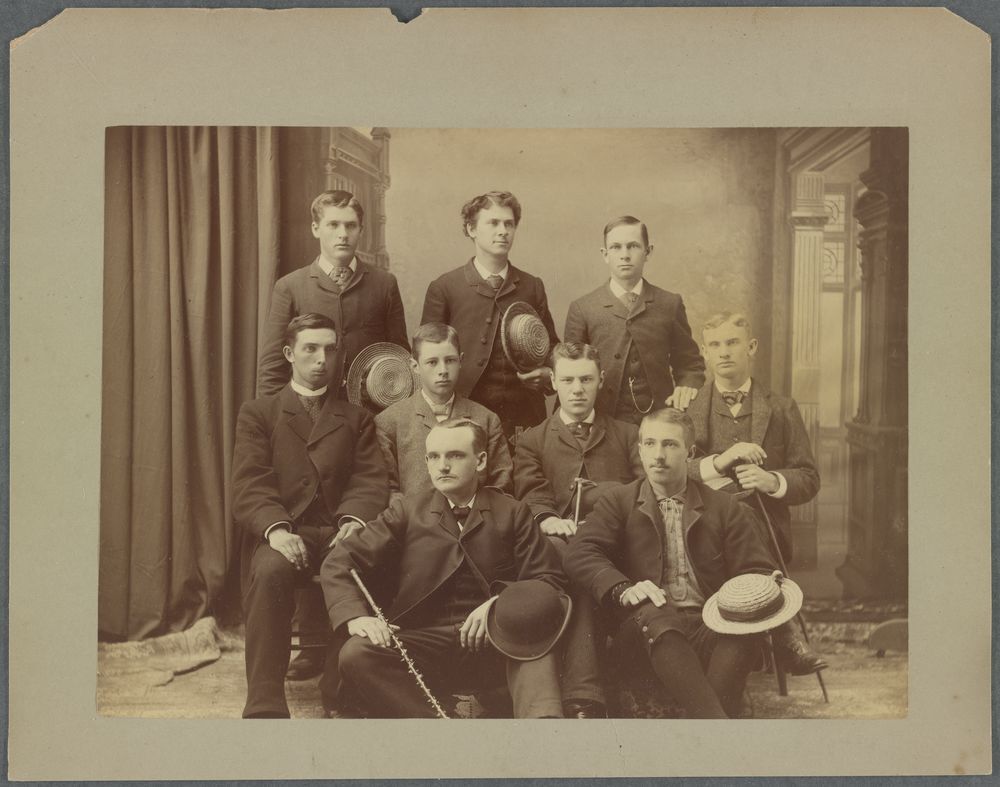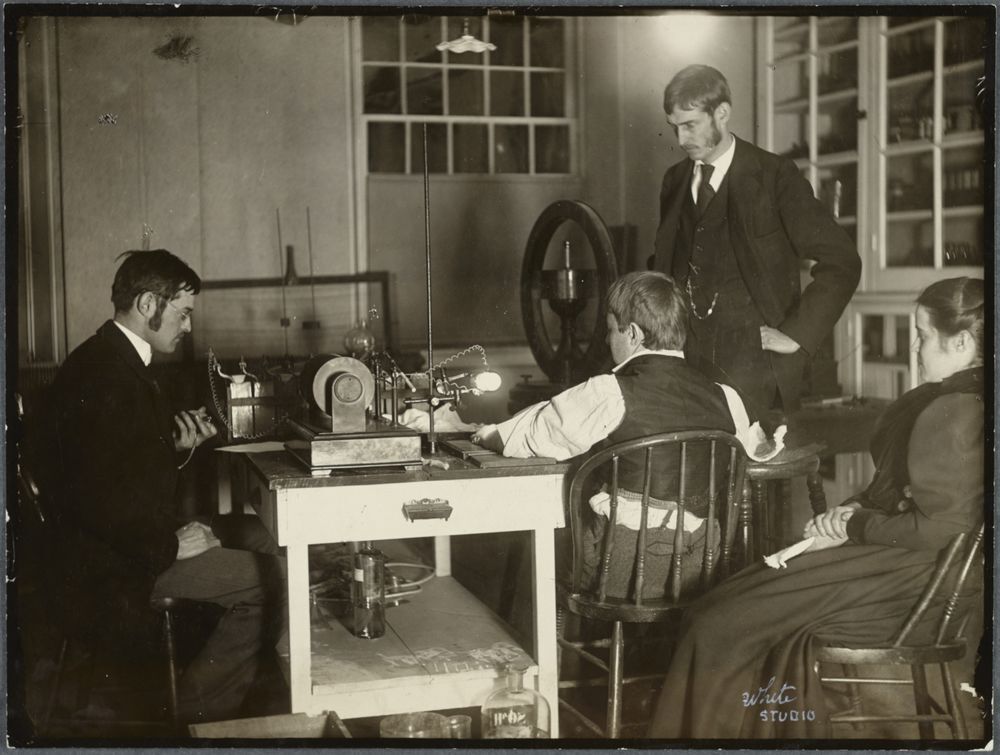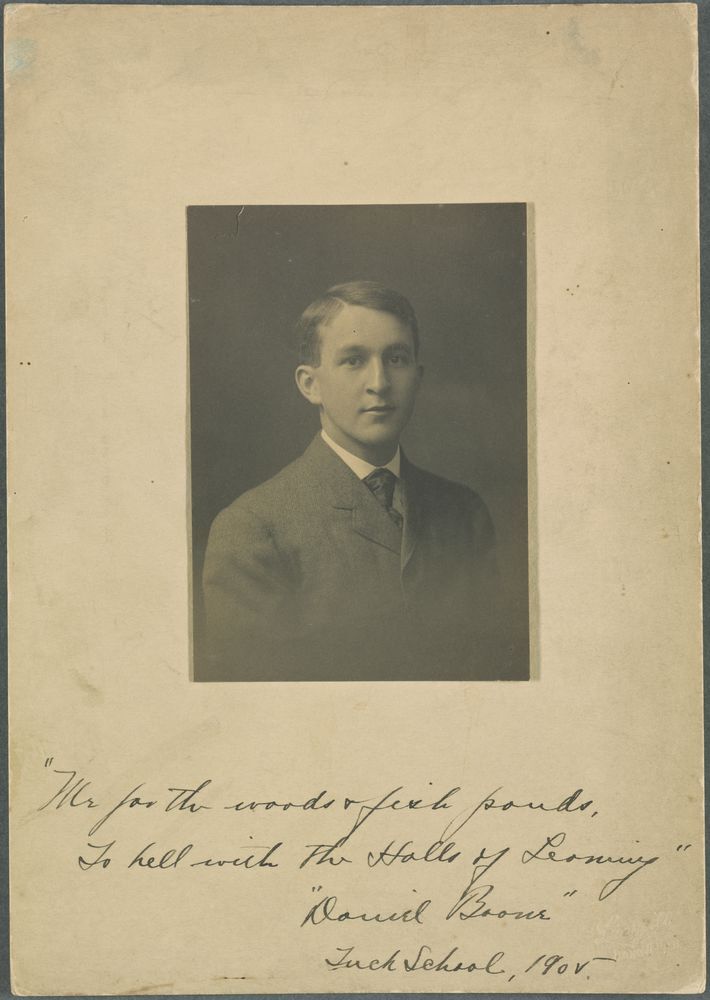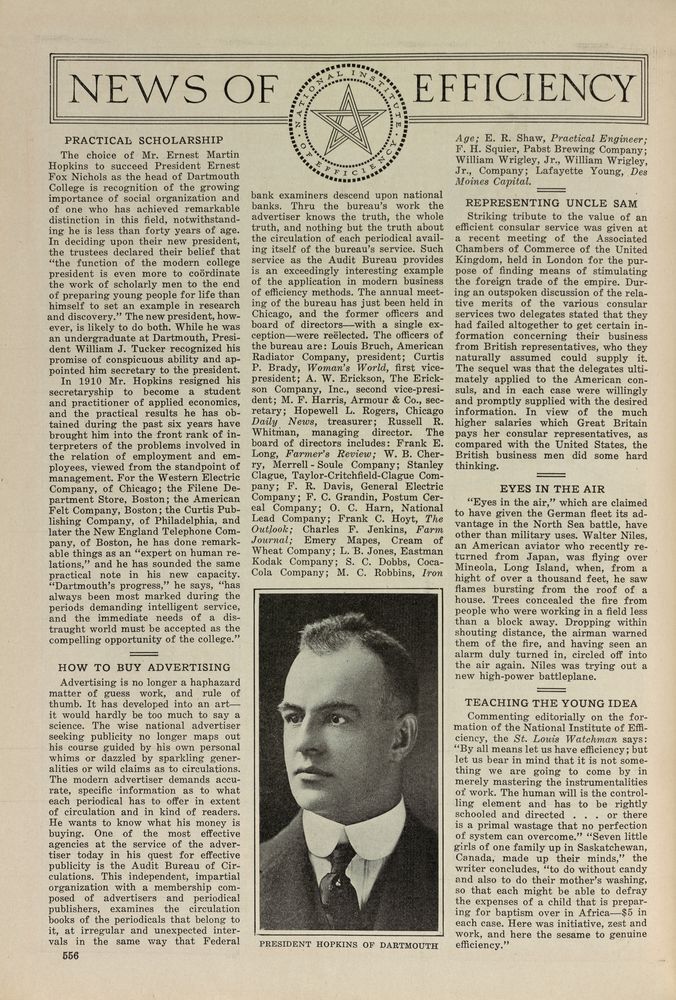Liberal Education in an Age of Innovations
After the Civil War, the idea of colleges and universities as a public service providing broad access to higher education spread and gained support. In the words of the first Morrill Act (1862), land-grant universities, subsidized through the sale of public lands, sought “to promote the liberal and practical education of the industrial classes in the several pursuits and professions in life." As at Dartmouth, liberal and professional education might stand together. Liberal arts courses were often at the core of the curriculums taught at land grant universities. In fact, the place of the liberal arts at land-grant universities reflected the profound and enduring influence of an antebellum “nation of colleges” like Dartmouth on conceptions of higher education.
The relationship between practical and liberal education was not always regarded as harmonious. For decades, Dartmouth was the uneasy host and home to the New Hampshire College of Agriculture. Some considered liberal education a spur and ballast to enterprise and innovation; others championed the positive influence of the new scientific management and its focus on efficiency on the conduct, organization, and purposes of Dartmouth College.
Previous: The Curriculum Expands -- Next: The Shock of the New, 1919-1968

